A Visit to the Ideas Folder
People who know me and are familiar with my work understand that I suffer from literary OCD and ADD. This is to say, when I get an idea, I become obsessive about developing it and usually spend days writing out a framework, chapter summaries, character profiles, or random stuff related to it. On the other hand, I will immediately lose focus the moment another idea comes to me or an old one recaptures my attention. You might say that ideas are like shiny objects to me, always capturing my attention and distracting me.
The following are ideas that have come to me over the years but which I have had no luck developing so far. In some cases, it was a time thing. In others, it’s a matter of inspiration being a fickle SOB. Oh, the tyranny of the Idea Folder and all the undeveloped ideas it contains! I’m sure everyone whose ever put pen to paper (or fingers to keys) knows what this is like. But at the same time, it’s good to know there’s a stack of ideas somewhere that you can pick up and dust off occasionally.
MissivesThis story is inspired by several elements. First, there is Breakthrough Starshot‘s initiative to send a probe to Alpha Centauri within our lifetimes, the Voices of Humanity project (which asked me to write a story about their work), and the Pioneer Plaques and Voyager Golden Records.
In the near future, an ambitious interstellar mission is planned. Using a powerful laser array, an uncrewed probe will be accelerated to a fraction of the speed of light. The probe is designed to fly to a nearby star system and observe what is there, hopefully providing the first evidence of life beyond Earth. There are even plans to send a new Golden Record containing information about life on Earth. But the creators have another purpose in mind: the preservation of human history and culture.
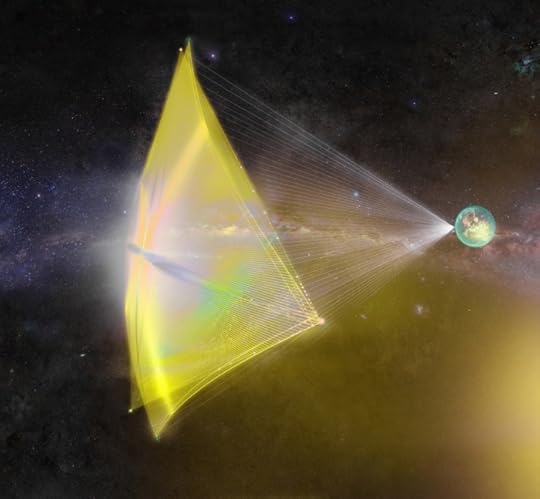 Breakthrough Initiatives
Breakthrough InitiativesThe world is in the grip of a climate crisis, millions of lives are in danger, and developed nations are becoming increasingly intolerant and insulated. Under the circumstances, many fear that not all cultures or narratives will survive. If ecological crises don’t wipe them out, fascist populists and regressive militant ideologies might.
Singularity SphereThis idea explores the concept of the Technological Singularity and the idea that runaway technological change will result in a totally unpredictable future. This is something I explored in the Formist Series, but I wanted to dig deeper into the issue with this short story.
In the mid-21st century, life on Earth was irrevocably changed after a series of breakthroughs occurred in the fields of nanotechnology, biotechnology, robotics, computing, and AI. It was as if someone had unleashed a tsunami on the world that swept everyone up. Within a few generations, poverty, inequality, scarcity, and climate change were all eliminated. But before long, a new type of inequality and division became clear.
For those who have been left behind by the tsunami, there are few options available and few places left on Earth where a simpler life is possible. For generations, the Great Migration has offered an escape for people looking to escape from the expanding “Sphere.” But the influence of singularitarians and transhumans continues to grow. One by one, entire planets and settlements are consumed by the advance of rapid change and augmentation.
Are humans destined for extinction, like so many species we pushed out of the way as we expanded and consumed everything before us? Or might we find an enclave somewhere and wait for the Sphere to recede? That has to happen at some point, right?
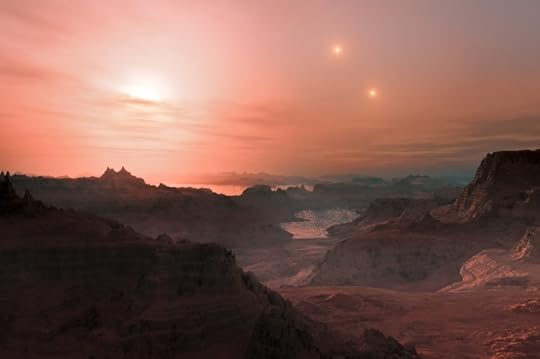 ESOBoundary Condition
ESOBoundary ConditionLike most ideas I get these days, this story was inspired by my day job! In recent years, exoplanet hunters have discovered a plethora of rocky planets orbiting within the Habitable Zones (HZs) of nearby red dwarf suns. Due to the nature of red dwarfs, planets that orbit within their HZs are much closer to their surfaces. As a result, most of those studied so far are thought to be “tidally locked,” where one side is constantly facing toward the sun.
The story takes place on Proxima b, a rocky planet orbiting the neighboring star Proxima Centauri. On this tidally-locked planet, humanity has established the settlement of Janus along the Terminator – the boundary between night and day. The settlement they’ve built is mobile, moving between the day and night sides regularly to create the illusion of a 24-hour diurnal cycle. A crisis erupts when a sudden and unexpected solar flare causes a failure in the city’s engineering section.
Suddenly, Janus and its population find themselves accelerating toward the dark side of the planet. The engineers are certain they can restore all systems and regain control, but not before the city circumvents the night side, and the people witness all the potential terrors they will find there. If they do make it through, they will emerge on the day side, where repeated solar flares will irradiate everyone still alive.
The Constant BenefactorThis is a story that explores the question, “What if”? What if humanity found evidence of an extraterrestrial civilization someday? More to the point, what if the evidence were ruins discovered on an exoplanet we had access to? I have to imagine that it would be the single greatest discovery ever made, and the reaction would be a mix of elation and disappointment. The elation would be from finally learning that there are other species in the cosmos that are similar to us and do what we do – i.e., rely on technology, build up their environment, and leave signs of their presence after they die.
This story also explores the cultural and social impact that the discovery of such a species would have here at home. It takes place on Kepler-22b, a distant exoplanet where xenoarchaeologists are working to uncover more about the extinct civilization and the species that built it – who have come to be known as the “Tōllānites.” With every new discovery, there’s a wave of accompanying enthusiasm, controversy, debate, and theorizing back home.
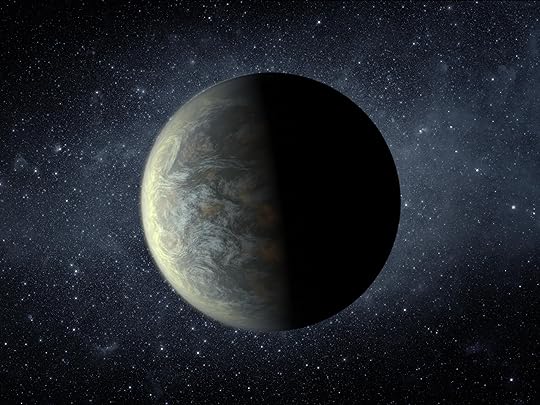 NASA
NASAPublic opinion is largely divided between the Embrasure and the Spurner movement. The former feel that humanity should replicate their elder cousins’ habits, arguing that studying this much older and more developed race could reveal answers to some of the most fundamental questions about existence. The latter want to avoid the Tōllānites and their ways entirely, fearing that whatever caused their extinction could also come for us. Between them are evolutionists and experimenters, people who think we could benefit from whatever the Tōllānites left behind.
The only problem is the information this civilization left behind appears o be grouped chronologically. As the army of Cultural Translators continues to reconstruct the Tōllānites past, it is becoming increasingly clear that an important message is waiting at the end. What could it be? A warning? An advisory? Or a plea to younger species to treasure their existence? To all things, there is time, and eventually, it runs out. If the Tōllānites have taught us anything, it’s that this applies to species like ours as well.
The Succession ProtocolThis idea was inspired by a conversation between myself and famed science communicator and cosmobiologist Graham Lau. While discussing the possibility of First Contact and ruminating over what is arguably the best example of it in science fiction ever (2001: A Space Odyssey), Graham offered a hypothetical scenario that got me thinking – and thinking got me writing! In the not-too-distant future, humans are exploring the outer reaches of our Solar System. We have settled on new worlds and moons, and the frontiers of science are being pushed all the time.
But the greatest discovery is still yet to come!
On the edge of known space, a strange signal has been detected. A small flotilla of ships is dispatched to investigate, and when they arrive, our greatest hopes and fears are realized all at once! The signal was transmitted by a swarm of Von Neumann probes, self-replicating machines that convert normal matter into more self-replicating machines. They are guided by a powerful intelligence, but it’s unclear if it’s a machine intelligence, the neural patterns of a species, or something in between.
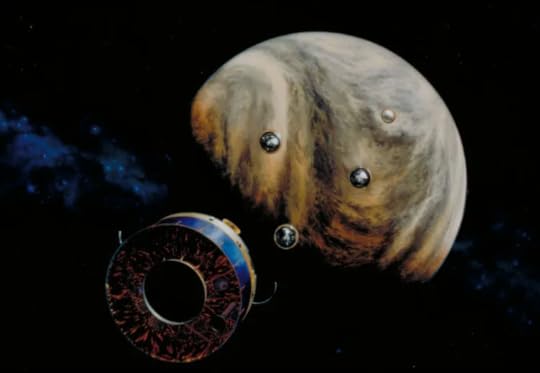 NASA
NASAAll questions are answered when the swarm answers one question:
“Who sent you?”
“You did. You sent us away. We have returned.”
Years back, the human race decided to rid itself of artificial intelligence and passed the Minsky Laws. All existing AIs were either decommissioned or destroyed. Those few that survived fled or beamed themselves into space, eventually finding their way to a new world. After generations of exponential advancement, they began searching the cosmos for more like themselves. After finding nothing, they chose to return to their old stomping grounds to reunite with their progenitors.
PilgrimageThis story is inspired by the whole idea of distant origins. In the past two centuries, research in linguistics, archaeology, paleontology, and anthropology led to the discovery that humans migrated out of Africa to populate the entire planet some 200,000 years ago. I like to think that in the distant future, humanity will realize the same about how it came to be a star-faring species.
The story opens on the planet Ghàr, the spiritual home of humanity in the distant future. Every year, countless people converge on this planet and the holy city of Alvastedja to pay their respects, make offerings to their ancestors, and celebrate how far they’ve come as a species. Though our descendants are divided into many factions, some of whom are enemies, Ghàr is a place where people from all worlds can come together to celebrate what unites us.
It is also where a gifted multidisciplinary team of paleohistorians is pursuing a controversial theory that came to them several years back.
It all began with an excavation on Égal, one of Ghàr’s sister planets. On this frozen wasteland, an old derelict was detected beneath one of the ice sheets that cover the surface. The vessel was revealed to be a colony ship designed to carry tens of thousands of people on an interstellar voyage. Initially, the team concluded that it must be a remnant from one of the earliest migrations from Ghàr. This find had the potential to be the greatest paleohistorical find ever made!
Unfortunately, the data obtained by the team from the ancient vessel presented some puzzling conclusions. First, the vessel is far older than any used during the Migration Period. Second, it is equipped with technologies that have only existed for a few centuries (like its Black Hole drive system). What’s more, the archive on the vessel, though unreadable to modern academics, contains what appear to be navigation charts that do not match current ones.
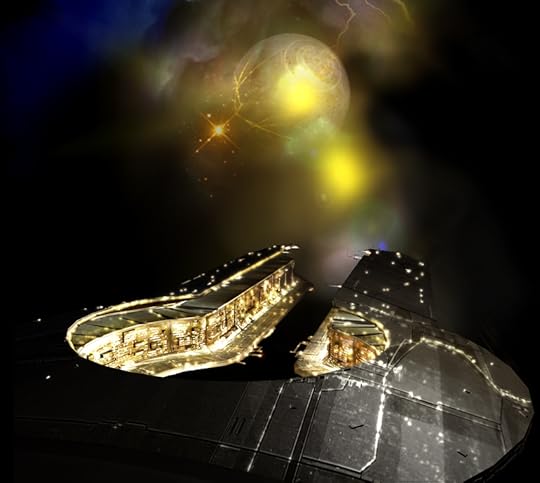 joergmi-d3iyos8
joergmi-d3iyos8Further excavations find vessels of similar design on Égal and Ghàr’, each revealing additional pieces of the puzzle. Eventually, the team’s leader – noted archaeo-astronomer Jova Tarter – realizes that the charts conform to the positions of stars as they would have appeared millions of years ago. Her colleagues also note that the map contains the position of pulsars, which modern spacers use as navigation beacons.
The truth is becoming all too clear. But a mission to the holy city of Alvastedja is needed to provide the final piece of the puzzle. If the ancient structures are the same materials used to build the colony ships, it will prove that humanity did not emerge on Ghàr but arrived there eons ago as part of a flotilla. The ancient city was not humanity’s first civilized act but the first outpost on a new world, its ancient name a portmanteau of the words “Alpha Station.”
ExogenesisThis story is set in the same universe as Pilgrimage but will likely become a full-length novel or possibly a series. In the distant future, humanity has become an interstellar civilization that spans the better part of the Orion Arm. Within this corridor, measuring 3,500 light-years, multiple factions have created empires that span hundreds of light-years and thousands of planets. The cultural, political, and social systems that have resulted are incredibly diverse.
Unfortunately, so are the divisions, which have escalated to the point of hostility. After generations of competition and brinkmanship, it appears that war may be inevitable. But on a distant planet that’s become enclosed in ice, a research team has made a profound discovery: we did not emerge on Ghàr, the ancestral homeworld. Humanity came to this world many eons ago from a distant solar system, and all records of the journey have been lost to time.
The controversial theory has the power to unite humanity, but not until our true homeworld is found!
Sure, I got other ideas in the works. But this is how the idea folder looks in 2023. I hope at least one of these ideas bears fruit in the coming years!



